Mass-casualty drill tests mettle of emergency responders
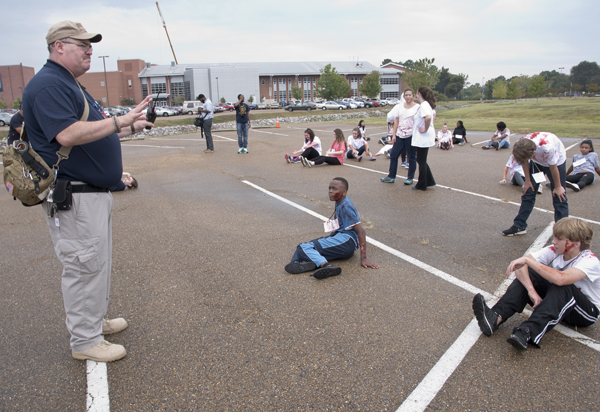
Published in News Stories on October 12, 2015
Considering a bomb was about to blow up during a concert on the Jackson State University campus, University of Mississippi Medical Center nursing students Mary Byars and Maura Smith were calm and focused.
“I'm going to learn how to triage in a disaster situation,” said Byars, who with Smith is a first-year student in the School of Nursing.
“I'll respond quickly, on my feet, and figure out the level of importance on who to go help first,” Smith said.
Actually, the coliseum at Jackson State wasn't rocked by an explosive. Instead, nursing students, UMMC emergency employees and JSU's Department of Public Safety were drilled Oct. 9 in how to respond to a mass-casualty scenario in an exercise directed by Dr. Carl Mangum, a SON associate professor and emergency preparedness and response specialist.
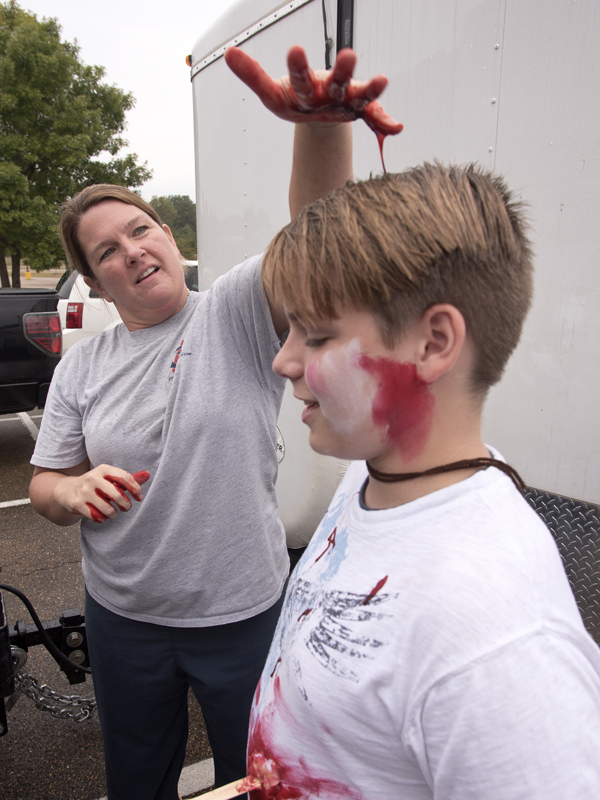
Paula Vital, a nurse educator in UMMC's Center for Emergency Services, drips fake blood on the head of Northwest Rankin Middle School student Chris Russell
Mangum's message to those taking part in the drill, including “victims” who are eighth-graders at Northwest Rankin Middle School, was clear: Consider it reality, and act accordingly.
“You've got lacerations and abrasions on the entire right side of your body,” he told one of the teens as nursing students applied blood-colored paint to her limbs and created false wounds with plastic patches. “If they talk to you, you can't hear them. You're injured.”
About 15 SON students and faculty took part in the advanced disaster life support drill staged by the Mississippi Center for Emergency Services at UMMC. They joined representatives of JSU's School of Public Health, the Mississippi Office of Homeland Security's Central Mississippi Response System, the state Department of Health, the Mississippi Hospital Association and the Mississippi National Guard's 47th Civil Support Team. The exercise was the final portion of a three-day training course for professionals in fire protection services, law enforcement, disaster management, emergency medical services, public health, medical and nursing staff, and volunteers.
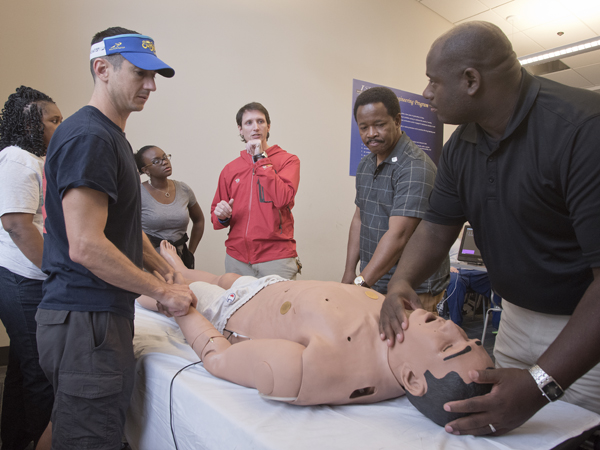
l-r Jason Wheat, (M3) Bertiel Harris, Yolanda Griffin, Nick Hoda (UMMC ER) Lindsey Horton and Elvis McGee during CPR training.
Before the drill began, all of the participants whose role was to give direct medical care to victims were blitz-trained in decontamination and in tagging patients to assess whose injuries were the most life-threatening, and who could wait for treatment.
Several JSU law enforcement officers and a handful of UMMC employees practiced life-saving maneuvers on a plastic dummy whose chest moved up and down as if he were breathing. “If this is completely cut off, you're going to have a lot of blood,” Dr. Nick Hoda, a UMMC Emergency Medicine resident, said as he pointed to the dummy's leg. “You will lose them in minutes.”
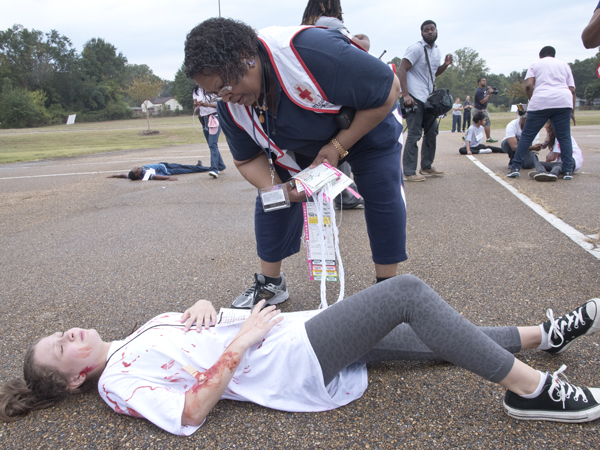
Ollie Harper, a Jackson State University nurse practitioner, assesses the "injuries" of Northwest Rankin Middle School student Whitney Robinson
The pretend injuries suffered by the middle-school students and resulting changes in their vital signs were meant to test the emergency responders' medical knowledge and ability to save lives. “Is there anything you don't understand about how to breathe shallow?” SON first-year student Allen Lampton asked eighth-grader Chris Russell, who like his fellow students wore a card around his neck detailing his injuries and how he was to react to them.
“I won't stay in one place. I'll be screaming for my mother, and I'll have partial hearing loss from the bomb,” said eighth-grader Kyla Thurston. “I'm learning that disasters are real, and tragedies happen.”
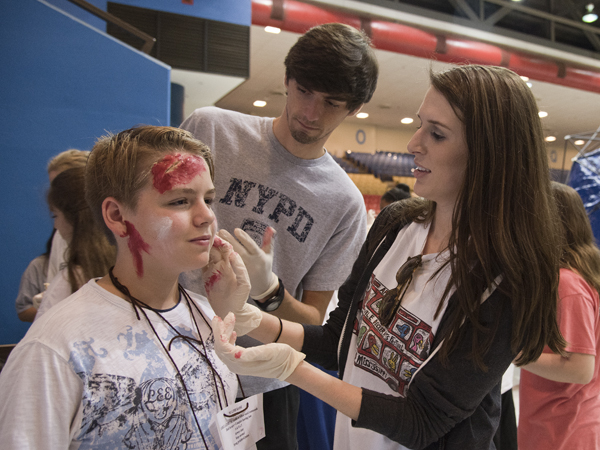
UMMC School of Nursing students Allen Lampton (center) and Maggie McDonald apply fake wounds and blood to the skin of Northwest Rankin Middle School eighth-grader Chris Russell
And when the students crawled, laid stomach-down or otherwise sprawled in a JSU parking lot, they acted out their injuries and reactions to them, including loud screaming, anguished faces and in Kyla's situation, hysterically running in circles as she dragged an injured leg. Some weren't cooperative or responsive when approached by nursing students, JSU employees and emergency responders trying to triage them.
After the injured were sorted and saved and the screams subsided, the drill's goals had been met, thanks to the unified response.
“When it happens, it ends up as one big team,” Mangum said.


